Bear Slide Golf Club
Cicero, Indiana
With the original intent of the course being to have a professional tour feel, the original owners brought in former professional player Dean Refram to layout the course. Reframs layout focused much more on shot making and recovery skills than on distance. This allowed for the course to develop into a layout with varied holes throughout. The range of the par threes from just over 100 yards to over 200 speaks to the difference in hole design. Refram was not the ordinary pro that thought a long straight course with bunkers at the same location on every hole was ideal. He seemingly enjoyed a little quirk and variety in his course. Unfortunately Refram passed away a few years after finishing the Bear Slide design.
The course has held fast to its maintenance practices. This has earned a hard-core group of fans that are more than willing to spread the word about Bear Slide. With the fine conditioning it also helps with the difficulty of the course without taking it over the top. The greens are smooth and the sand allows even the most modest of talents to hit a bunker shot onto the putting surface. Bear Slide does nothing but give the player a fun round while also providing a stiff challenge without feeling like you have been mauled. The course has hosted multiple state championships in its brief history and has received notable acclaim from national magazines since its opening day.
The course was laid out by Refram into two distinct sections. The front nine runs over the flatter terrain and makes use of two ponds as water hazards. The slight elevation changes that do exist are used by Refram to provide some challenge on approach shots for a few of the holes. For many Hoosiers, this is probably as close as they will get to a Scottish course, so it is often referred to as a links-style layout. The second nine holes is routed over much more uneven terrain, through hills and valleys and around the Bear Slide Creek with some trees providing some additional scenery. Another water feature adds to the beauty of the twelfth. Both sides of the course have some contoured mounding on the exterior of the holes and some deep rough that comes into play if wild off of the tee.
Holes of note:
Hole 2 426 yards The best angle into the green is hidden from the tee as the fairway angles out to the right and away from the player creating a slightly uncomfortable tee shot. The further to the right you go, the better the angle into the green though. To clear the knob on the left is one thing, but to get it the remaining seventy-five yards to the green is another. There is no way it looks that long back to the green. This might be my favorite hole on the course.
#2 from the tee with the water tower in the distance
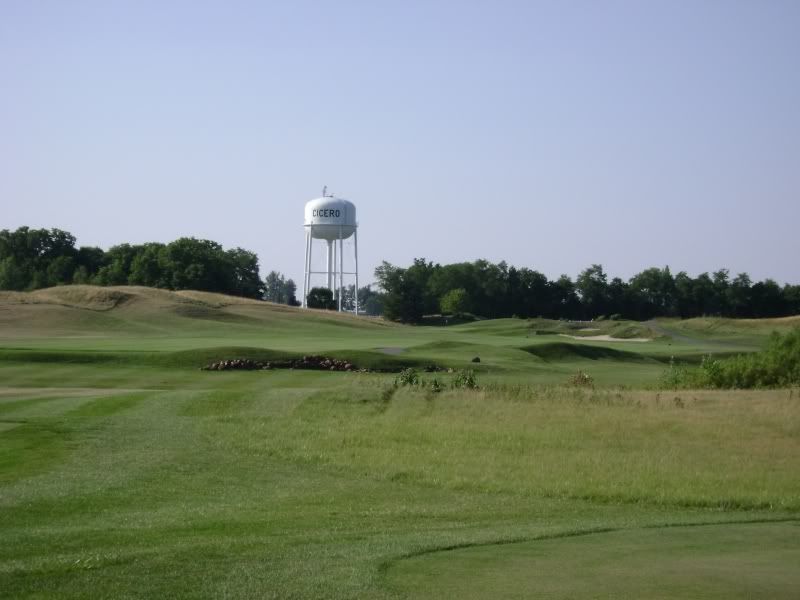
The view from the right side is open.
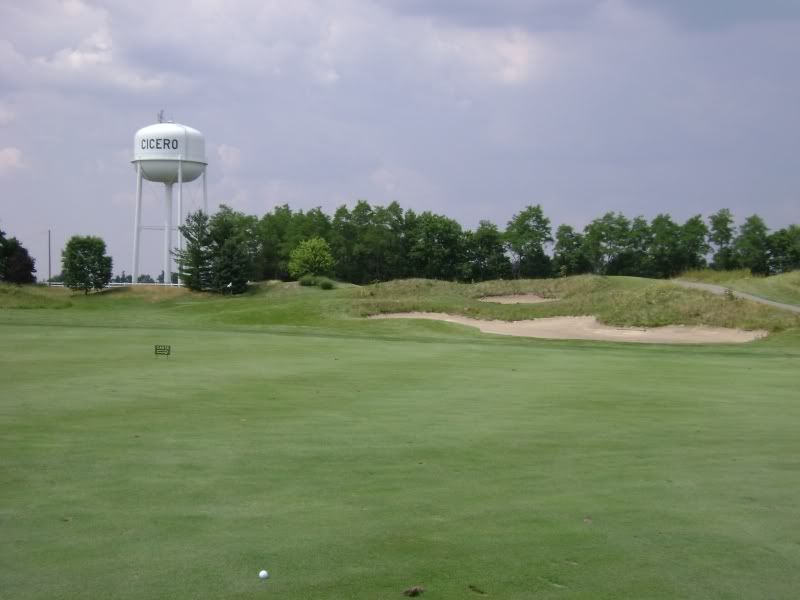
Hole 3 517 yards A center line bunker at the end of my driving zone is a worry, but what is the bigger struggle is deciding what club to lay up with on the second to the blind fairway beyond the mounding. If you dont clear the center bunker on the tee shot, going for two is foolish.
Centerline hazards from tee to green.

Hole 6 186 yards Something you hardly ever see, a blind par three. The right side of the green is barely visible past the large knob feeding in from the left. A clever use of one of the few natural land contours by the architect to provide interest. The green slopes hard from front left to back right. Play short and trust in the club you hit or you are in serious danger of a triple or worse.
The tee shot
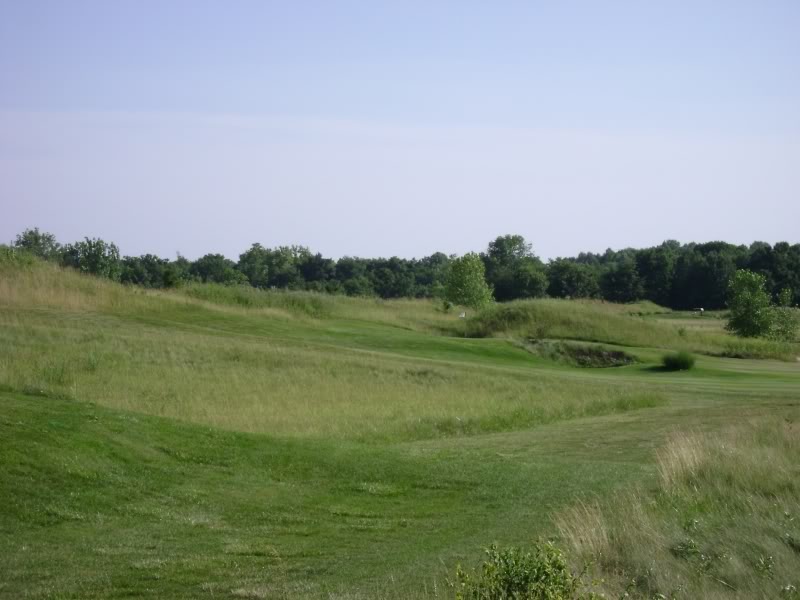
The green beyond the hill
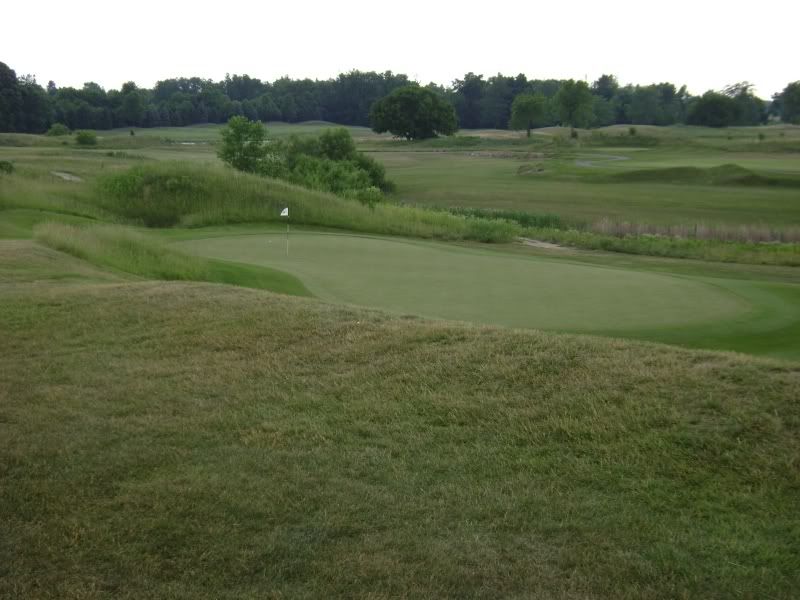
Hole 7 469 yards An elevated tee allows the player to hit a tee shot that goes forever to the wide fairway. A deep hole at the end of the landing zone and the tree provide some serious problems. Anything on the left is blind to the green, and the right is behind the tree. The green is fairly tough to hold, but anything left is dead and has a steep incline back up to the putting surface.
The gorgeous tee shot
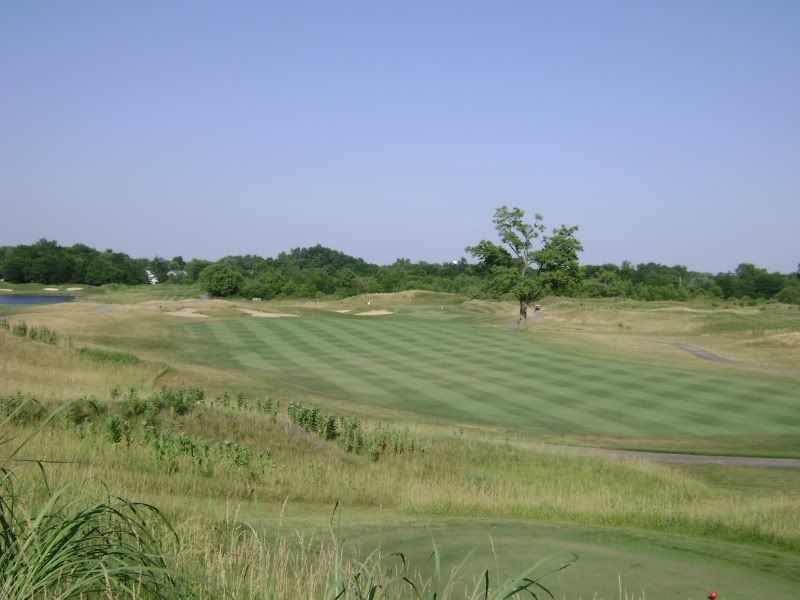
Short of the green
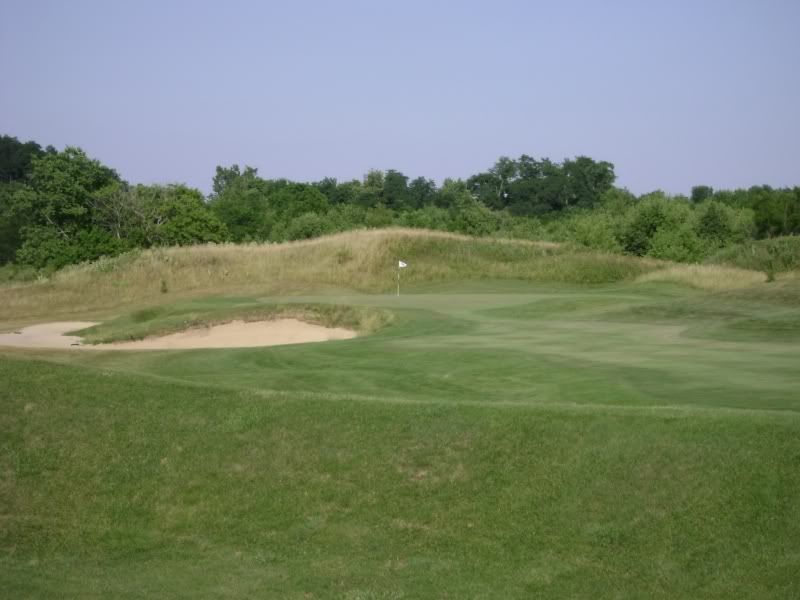
Hole 8 533 yards Again, Refram provided a wide landing zone off the tee, but allows the player to hang themselves with their second. If you play up the right side you will have a clearer shot into the green but a little longer. The left side is shorter, but the green is narrower from that side and you have to hit over the hummocks and bunkers. Just worry about getting on the green and not how close you are.
Trouble on the left of the green
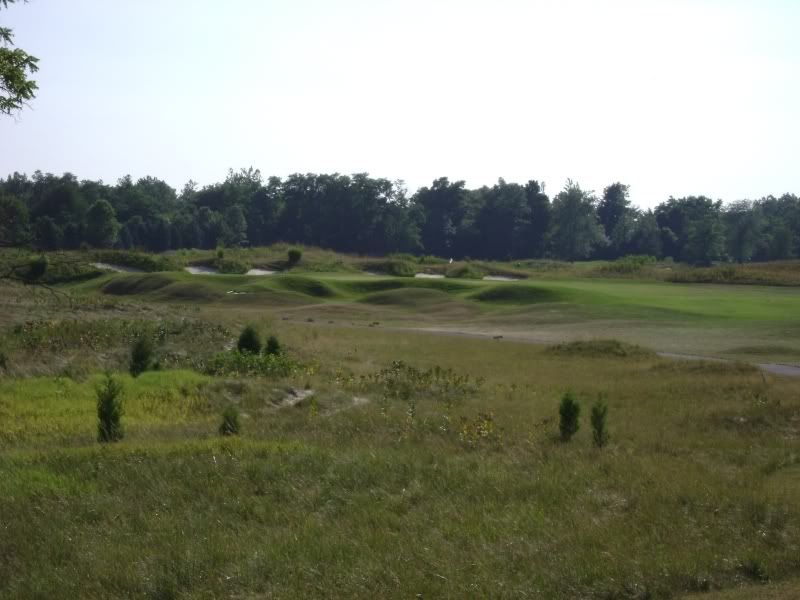
Hole 10 446 yards A longer par four that runs downhill to the creek and then crosses over to a heavily contoured green. A very nice hole that introduces the back nine.
A view back up the hole shows the flow of the land that actually puts the player in ideal location for the approach.
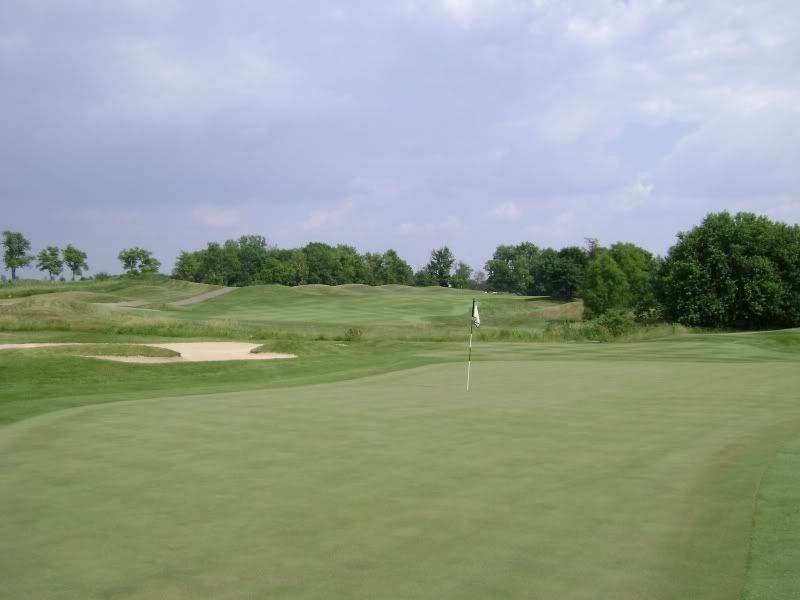
Hole 11 344 yards - A cool mid-length par four is next as the tee shot must run out to a plateau with a long iron or fairway wood and then play uphill to a semi-blind green that is protected by mounding on one side and a bunker on the other. If the player lays back too far, the shot is completely blind and requires complete faith in the distance on the nearest marker. If this hole plays into the wind it increases the difficulty by almost two-fold.
A brilliantly placed green
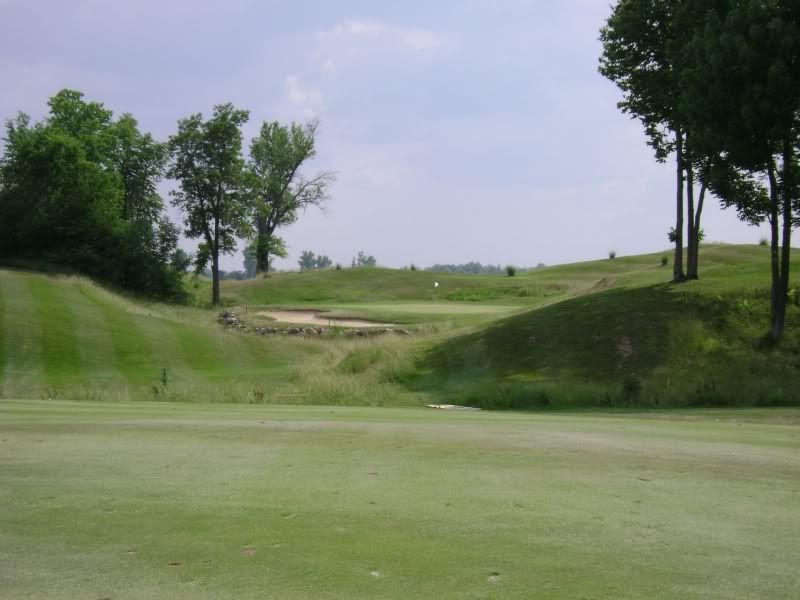
Hole 12 583 yards - The last of the par fives and also a really good strategic hole. A wide-open fairway for the drive then becomes a strategic nightmare for the player with at least three distinct options and maybe some others yet unfound by the author. The green complicates matters at it runs from right to left and towards the watery doom on that side.
A view from the 13th tee shows the slope of the green from the hill to the water.
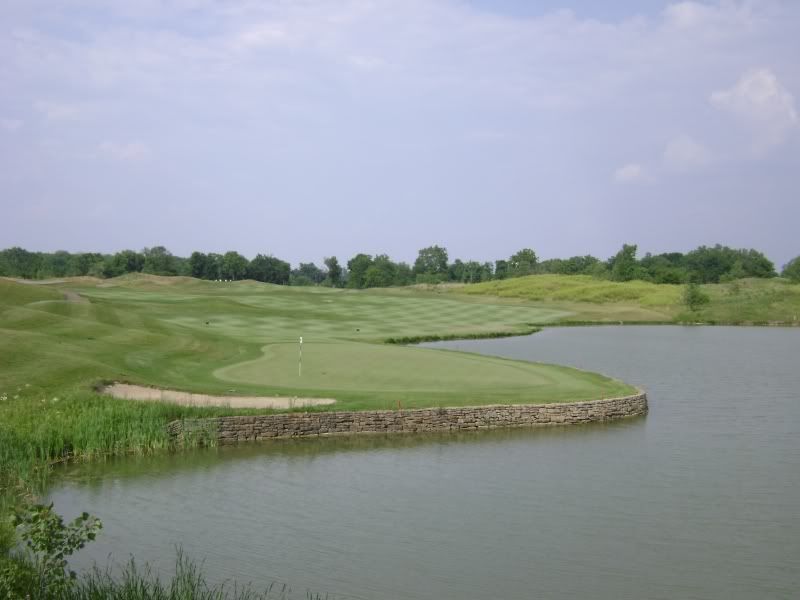
Hole 15 337 yards - The creek makes its presence felt the rest of the way home as it crosses the fairway on the fifteenth and requires a go or no-go decision from the tee on the short par four. The slope leading into the green from the right side is the perfect way to get around the sand to the left and find any back pin locations.
A view from above the back tee markers. If they cleared the tree to the left, this could be a wonderful tee location.
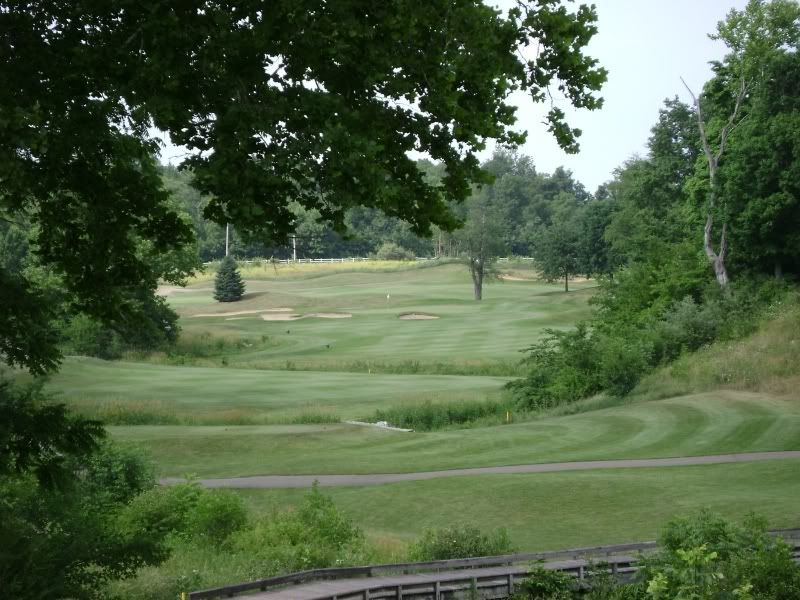
Hole 16 188 yards A rare dropshot hole for modern courses in Indiana. Short appears to be dead, but a piece of reclaimed ground actually provides a safe haven for those that are just shy of reaching the green. But recovery from down there is almost impossible.
View of the hole from a shorter tee
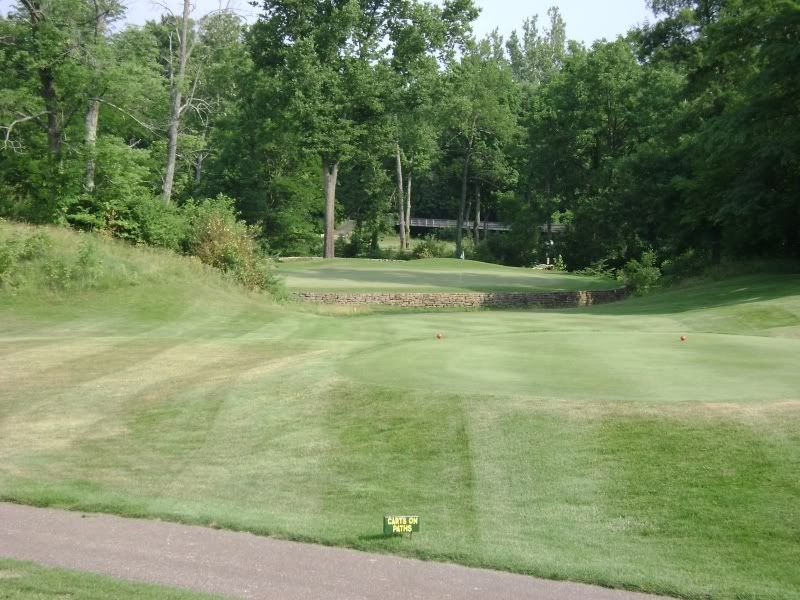
Hole 17 376 yards An uphill tee shot to a dogleg hole that runs from right to left. The approach runs over a depression with bunkers and a grass pit. The green slopes significantly from back to front. The left side falls away into a deep bunker.
The approach on 17
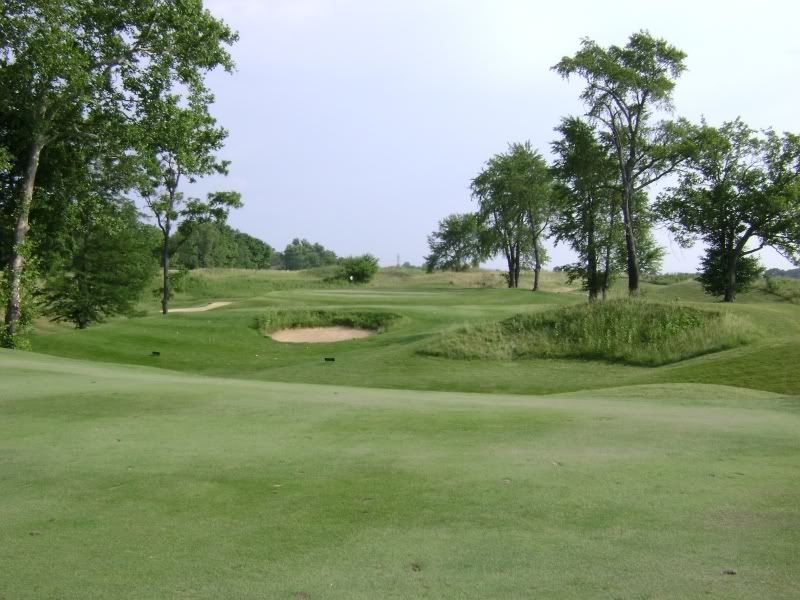
Hole 18 449 yards - Lastly, the most widely acclaimed hole on the course seems to be custom made for a professional tournament. The long par four plays from an elevated tee to a tree lined fairway. The roll of the ground is slightly from left to right and leads down to the creek that crosses approximately 100 yards out from the green. The green is placed in a lovely amphitheatre setting with steep slopes on three sides creating a miniature arena. The green has adequate contouring, especially on the left side, to force the timid into an uncomfortable situation with the hole, match or tournament on the line. The beauty of the hole almost makes you forget how brutally tough it is.
The view back up the hole from the top of the amphitheatre.

Bear Slide is possibly a top ten public course in the state. It is also a great value as it is considerably cheaper than other courses of this level around the state such as the Warren Course, Brickyard Crossing and Otter Creek. If I were to pick out something negative it would be that holes like 3, 4, 12 and 13 seem to stick out from the other holes due to their design elements involving ponds and waste bunkers.